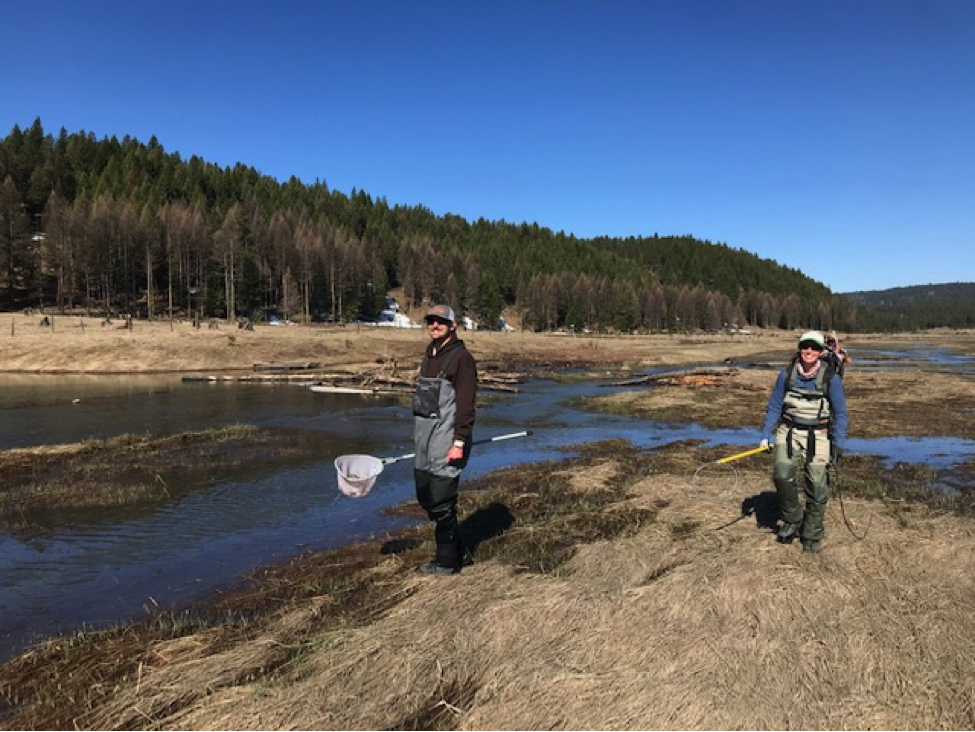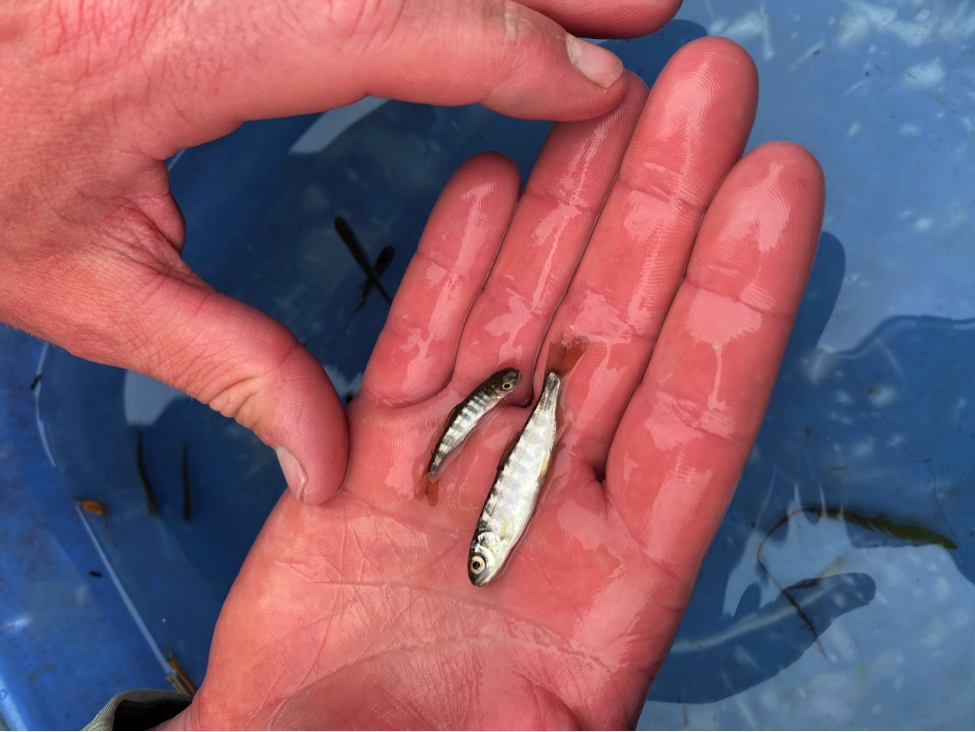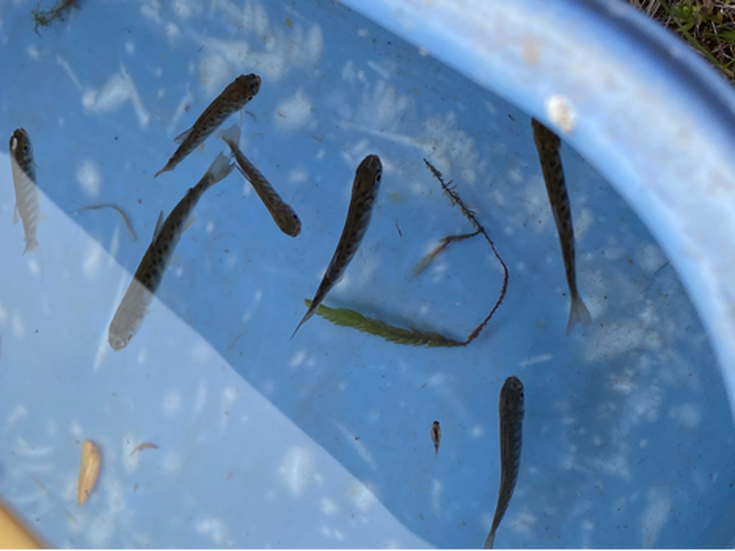|
by Matthew Kaylor (CRTFC) and Evan Booher (ODFW) MFIMW partners including Oregon State University (OSU), Oregon Department of Fish and Wildlife (ODFW), the Columbia River Inter-Tribal Fish Commission (CRITFC), and the Confederated Tribes of Warm Springs (CTWS) are investigating when Chinook Salmon fry leave spawning gravels (emergence) across the Middle Fork John Day River (MFJD). This is important to evaluate because emergence timing determines the conditions fish first experience (temperature, food availability, flow, habitat accessibility) and the amount of time fish have to grow. Differences in emergence timing across the watershed may translate to differing experiences in growth and survival as well as differences in their ability to access floodplain habitat. Staff from the Oregon Department of Fish and Wildlife sampling for Chinook Salmon fry in inundated floodplain areas of the Middle Fork John Day River. Researchers first modeled emergence timing throughout the MFJD using data on the timing of spawning and water temperature. They found that emergence was earliest upstream near Bates State Park and was progressively later downstream. This is the opposite pattern of what they found for other NE Oregon rivers in the Grande Ronde River basin, and may be attributed to upstream groundwater inputs which are warmer in winter compared to colder surface water. To evaluate these predictions, ODFW and CTWS began capturing fry at multiple locations along an upstream to downstream gradient throughout the MFJD during spring 2021. They sampled fry at these locations every week from March through May and will examine the size of fish over time to determine when peak emergence occurred, which will then be compared to modeled predictions. Lastly, in collaboration with the National Oceanic and Atmospheric Administration (NOAA), researchers are modeling when and where floodplains are flooded across the MFJD using historical flow records and satellite imagery. Floodplains provide important habitat to juvenile salmon by providing abundant prey and refuge during high flows. The researchers are determining when fish emerge relative to when floodplains are flooded to determine how fish may use these habitats, and where floodplain restoration may be most impactful for juvenile Chinook Salmon. Juvenile Chinook Salmon captured in the Middle Fork John Day River in spring 2021 to evaluate emergence timing from nests. The fish on the left was a newly emergent fry, while the larger fish on the right was transitioning to the parr life stage. Chinook Salmon fry captured in the Middle Fork John Day River to evaluate emergence timing from nests.
Inundated floodplain in a restoration area of the Middle Fork John Day River during early spring runoff in 2021. Floodplains are important habitat during the early life stage of juvenile salmon, providing refuge during high flows, abundant prey, and thermal conditions conducive for fish growth.
0 Comments
Leave a Reply. |
IMW News Updates
Archives
September 2022
Categories |



 RSS Feed
RSS Feed
